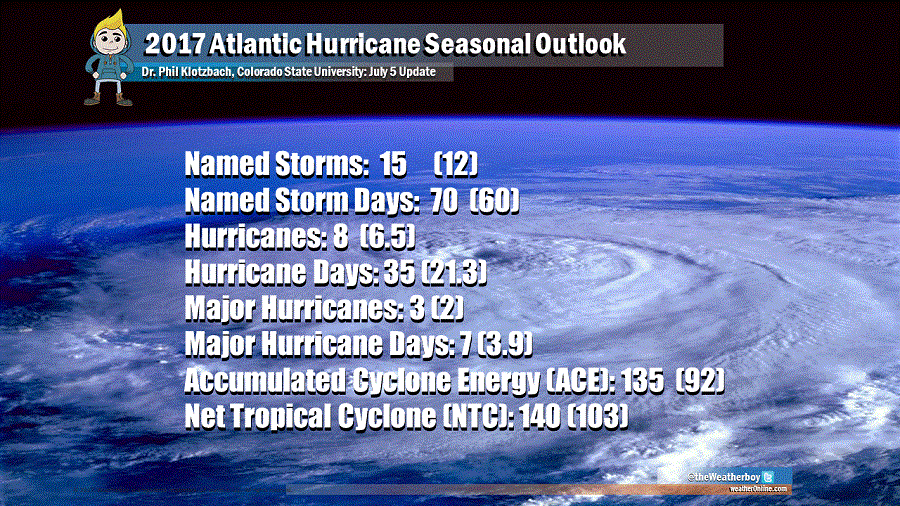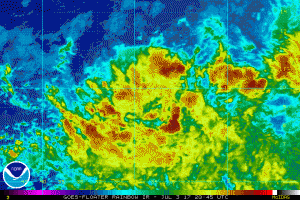
Experts with Colorado State University have increased their annual seasonal outlook for hurricane season for the Atlantic hurricane basin once again, increasing the number of expected tropical storms, hurricanes, and major hurricanes. Dr. Phil Klotzbach, the lead research scientists behind the forecast, described the reason for the changing numbers in their June update to us. “Basically, the odds of a moderate El Nino event look to have diminished, and the tropical and subtropical Atlantic have anomalously warmed,” said Dr. Klotzbach. In this latest July update, Dr. Klotzbach and forecast co-author Dr. Michael M. Bell write, “With the increase in our forecast, the probability for major hurricanes making landfall along the United States coastline and in the Caribbean has increased as well. As is the case with all hurricane seasons, coastal residents are reminded that it only takes one hurricane making landfall to make it an active season for them. They should prepare the same for every season, regardless of how much activity is predicted.”

The 2017 Atlantic Hurricane season began on June 1 and continues through to November 30. The season has already produced three storms: Arlene, Bret, and Cindy. The forecast totals in the updated Colorado State University include these storms that have already formed.
The updated outlook calls for 15 storms and 8 hurricanes, up from the call for 11 storms and 4 hurricanes made earlier this year. While odds of a US landfall are up, the outlook does not forecast specific storm tracks or impact zones for the season.
In May, the National Oceanic and Atmospheric Administration (NOAA) released their own tropical weather outlook. They too are calling for an active season.
This season, be sure to bookmark the Weatherboy Hurricane & Tropical Weather page here. The page will have storm data and forecast tracks for every storm in the Eastern Pacific and Atlantic Ocean for the 2017 Hurricane Season.
The full updated forecast from Colorado State University can be found here: http://tropical.colostate.edu/